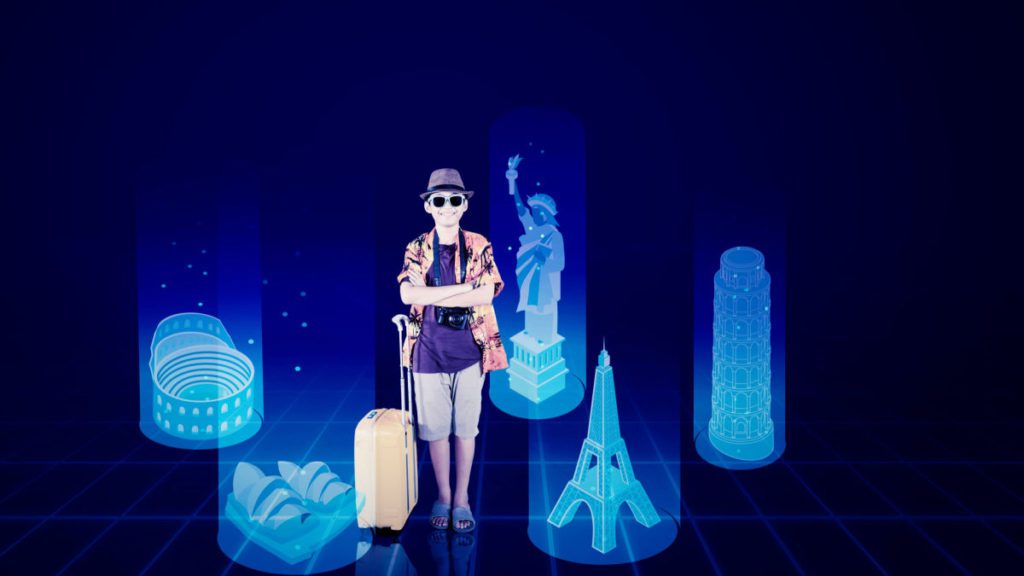Fully immersive Metaverse environments are still very much under construction. The news out of Meta is increasingly dire as it becomes evident that virtual worlds are yet to hit the mark if organizations expect hordes of users to adopt the technology at the rate that they hope.
Still, in the background, increased use of artificial intelligence (AI) technologies, free-to-use, next-generation design tools like Nvidia’s Omniverse, and a culture of collaboration are slowly bringing the hype to life — take the ultra-realistic Bali Twin Metaverse, for example.
Yet, another consideration few commentators have considered in detail is inter-Metaverse travel. While it’s already widely recognized that the Metaverse will one day become an interoperable space where multiple platforms will work together consecutively, little has gone into how users will travel from one to the other.
A true-to-life Metaverse will undoubtedly require a transport solution that mirrors these technological advances, and this is what we will explore in this article.
Where We Are Now
Perhaps the best place to start is with one of the most popular Metaverse platforms, Decentraland. At the heart of Decentraland is Genesis Plaza. From here, users can browse Decentraland’s various destinations and access them with a few clicks.
The idea of a central hub is popular and entirely functional. However, it is a simple solution.
Meta’s Oculus headset includes various apps that enable users to look at points on a map and be instantly transported to their virtual equivalents. While this is a step in the right direction, more can be done to enhance the traveling experience and enable it to become a benefit and independent draw for users.
Where We Could Go
In this article, we want to envision what Metaverse travel could be — how it could enable transportation to become an experience in itself.
As the quality and consistency of Metaverse applications improve and interoperability becomes standardized, an entire Metaverse industry could develop focused on traveling between one world and the next. Ultimately, the transport between platforms could become entertainment in itself. So what does this new era of transportation look like?
In the future, organizations could create interoperable transportation hubs, virtual spaces where users could choose to travel by any means, be that by land, sea, or air. Travel passes could be issued as nonfungible tokens (NFTs), and users would have the option to choose which service provider they decided to travel with.
Duration could be factored in, too. In one scenario, a user may prefer to take a long train ride with out-of-this-world views, entertainment screens, and virtual refreshments. In another, thrill-seekers might choose to take a rocket ship and experience a few moments in a high-end flight simulator.
Of course, there is no limit to transportation on offer. Later down the line, we might see organizations specialize in specific modes of transport based on the specialties within the team. For example, a company that masters the virtualization of sea travel, complete with hyper-realistic water effects and imitation sea swells, could operate cruises from one world to the next.
Playing on with the concept of life enchantment, where Metaverse experiences provide a personal level of value that transcends what is possible in the real world, Metaverse users could create their own customized travel experiences. Maybe they could remove all other users from a carriage, change the scenery, add music, invite friends on board a party bus, or even add specific smells and tastes from virtual buffet cars.
With all the possibilities available, the ultimate vision remains the same: to make the journey to the destination as attractive as the destination itself.
A Testbed for Transport Innovation
With the opportunity to provide real customer experiences on transportation systems in the Metaverse, companies could use digital twins to test out innovations bound for the real world. For example, customizable views from windows, seating arrangements, augmented reality-integrated technologies, and customer interactions are viable processes that companies can test in the Metaverse before being replicated in real life.
Want to compete in the Metaverse? Subscribe to the My Metaverse Minute Channel:









